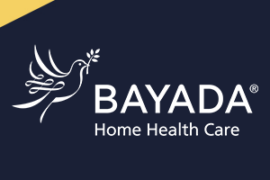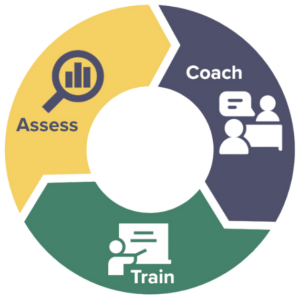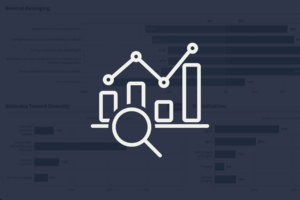Employee resource groups (ERGs) and similar employee-led groups can play an important role in advancing an organization’s strategic diversity, equity, and inclusion (DEI) initiatives. Whether they are called ERGs, business resource groups, or something else, these groups unite individuals who share similar backgrounds or beliefs to tackle business challenges – such as talent acquisition, employee engagement, product innovation, or consumer satisfaction — all from a unique point of view. ERGs provide a way for organizations to discover new perspectives, ideas, and innovations that may otherwise be missed or even stifled.

These groups can be pivotal in fostering an inclusive workplace culture. However, poorly established or maintained groups can set back an organization’s DEI efforts, with roadblocks such as office politics, disagreement, and lack of clear progress thwarting efforts. Thriving ERGs don’t happen by accident; they benefit from clear, business-aligned parameters. It’s important to keep these 10 tips in mind as your organization establishes and maintains its ERGs.
- Write a charter. When the ERG is established, create a document that outlines the purpose, goals, and structure of the group to ensure that the group benefits both the organization and its employees. A charter outlines priorities and values, which helps the ERG enlist executive support and funding. Defining goals and purpose also prevents the group from competing with other groups or duplicating their efforts.
- Create membership guidelines. There should be established parameters for membership and participation in the group. Candidates should go through a selection process, and all members should have clear responsibilities to remain in good standing, like agreeing to attend a certain number of meetings.
- Enlist executive support. Executive sponsors are members of the organization’s executive team and are passionate advocates for DEI and the community their respective ERG represents. They are committed to supporting the efforts of the ERG, championing its priorities, and raising the visibility of the ERG across executive leadership. Other duties may include mentoring ERG members and ensuring the group’s activities remain aligned with company priorities.
- Secure funding and financial support. If DEI groups are expected to drive strategic business imperatives, they should receive the same consideration for funding as any other business unit. ERG meetings and activities should happen during work hours, and there should be a budget for any events. ERG leaders should be compensated in some way: monetarily, with professional development, access to executives, etc.
- Ensure inclusivity by welcoming allies. While groups are often organized around a specific identity, it’s also important to welcome allies who might not share that particular identity. Remember, DEI groups are meant to be inclusive.
- Be more than a social group. While groups should provide a safe space for everyone to share (and possibly vent from time to time), successful groups should focus on the mission and goals established in their charter. This may include spearheading strategic initiatives such as partnering with HBCUs or creating a supplier diversity program.
- Communicate, but not too much. Be sure that there is internal and external communication occurring around group efforts and outcomes. However, be mindful not to inundate employees or consumers with so much communication that it becomes burdensome. It’s often helpful to establish a regular cadence for sharing information, in consultation with your organization’s marketing team.
- Work with other employee groups. If your organization has multiple employee-led DEI groups, it is important that the groups all know what each other has planned so efforts are not duplicated. It’s also important that groups work together to avoid a sense of discord around competing priorities. We recommend every group meeting include an update from the liaison from the DEI office or committee, separate executive sponsors for each group, and dedicated budgets for each group. It’s also helpful for ERG leaders to meet regularly to work on shared programming (i.e. a collaboration between the Pride ERG and Black Professionals Affinity Network on the history of the Progress Pride Flag).
- Measure and track progress. Demonstrating a return on investment of the group’s efforts is critical in maintaining momentum. In the first year of a group’s implementation, hard data may be challenging to collect, however ERGs can track participation numbers, detail how initiatives align with company goals, and collect personal anecdotes about the impact of events.
- Celebrate wins and accomplishments. Even small wins, like establishing a group’s name and mission, should be communicated and celebrated with leadership and across the organization.
Employee-led groups should be a cornerstone of any organization’s DEI strategy. Applying these best practices will maintain your group’s efficacy, drive progress toward its goals, and help cultivate a more inclusive workplace.Looking for how-to guidance for launching, growing, and maintaining your ERG? Check out TDM Library for Teams.
Amber Keister is a Content Strategist at The Diversity Movement. She has spent more than 20 years as a journalist for publications throughout the South. Connect with her on Linkedin.












